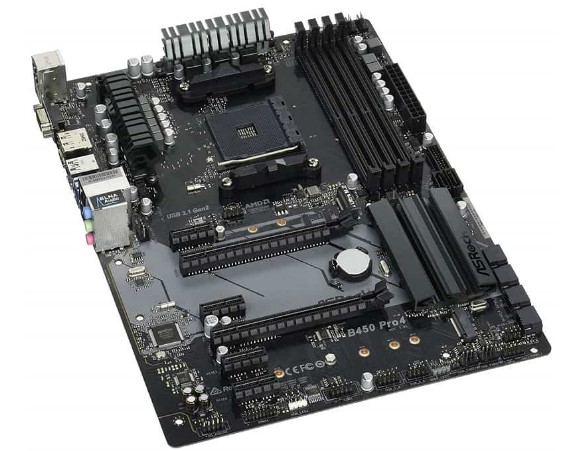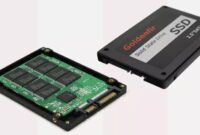Definition of a Motherboard: The Heart of Your Computer
A motherboard is a central piece of hardware that acts as the backbone of any computer system. Without it, the components like the CPU, memory, and storage would have no way to communicate and function together. In this article, we will explore the role of the motherboard, its various components, and its importance in modern computing.
What Is a Motherboard?
A motherboard is the main printed circuit board (PCB) in a computer that provides a platform for all other components to connect and interact. It houses essential parts such as the CPU (central processing unit), RAM (random access memory), and expansion slots, ensuring they work together to run the system efficiently.
In simpler terms, the motherboard can be thought of as the “central nervous system” of a computer, with all components plugged into it. Without it, no communication between the different parts would be possible.
Key Components of a Motherboard
- CPU Socket:
- This is where the CPU, also known as the brain of the computer, is installed. Different motherboards support different CPU sockets, which means not all CPUs are compatible with all motherboards.
- RAM Slots:
- RAM slots allow for the installation of memory modules, which store temporary data for running programs and processes. These slots usually come in pairs, with many modern motherboards supporting up to four or eight slots.
- Expansion Slots (PCI, PCIe):
- Expansion slots are used to connect additional hardware such as graphics cards, sound cards, and network cards. The most common type of expansion slot in modern motherboards is the PCIe (Peripheral Component Interconnect Express), offering faster data transfer speeds.
- Chipset:
- The motherboard’s chipset controls the flow of data between the CPU, memory, storage devices, and peripherals. It essentially dictates the motherboard’s capabilities, such as the number of USB ports, the type of memory it supports, and more.
- SATA and M.2 Connectors:
- SATA (Serial ATA) connectors are used to connect storage devices like SSDs (solid-state drives) and HDDs (hard disk drives). M.2 slots, on the other hand, are faster alternatives primarily used for NVMe SSDs, which significantly enhance system performance.
- Power Connectors:
- Power connectors supply electricity to the motherboard and its components. The most common types include the 24-pin ATX connector and an additional 4- or 8-pin connector for the CPU.
- BIOS/UEFI:
- The BIOS (Basic Input/Output System) or UEFI (Unified Extensible Firmware Interface) is firmware embedded on the motherboard. It initializes hardware components during boot-up and provides the interface for adjusting low-level settings.
Types of Motherboards
There are several types of motherboards, each designed for different purposes and system requirements:
- ATX (Advanced Technology eXtended):
- The most common type of motherboard, offering a full range of features, including multiple expansion slots and RAM support. ATX motherboards are versatile, making them ideal for gaming, workstations, and general-purpose systems.
- Micro-ATX:
- Smaller than the standard ATX, but still offering many expansion options. It’s perfect for users who want to build compact systems without sacrificing too much functionality.
- Mini-ITX:
- Known for its small size, this type of motherboard is often used in compact builds, such as home theater PCs (HTPCs) or small gaming rigs. However, it has fewer expansion slots and can support fewer components.
The Role of the Motherboard in System Performance
The motherboard plays a critical role in determining the performance of your system, as it acts as the platform where all major components communicate. Choosing the right motherboard is essential to ensure compatibility with your CPU, GPU, and other hardware.
A few important factors to consider for optimal performance include:
- CPU Compatibility: Ensure that the motherboard’s socket and chipset support the CPU you’re using.
- RAM Speed and Capacity: The motherboard should support the type and speed of RAM that matches your performance needs.
- Expansion Options: For gaming, video editing, or data-heavy tasks, a motherboard with multiple PCIe slots for graphics cards or other peripherals is necessary.
Upgrading and Replacing a Motherboard
When it comes to upgrading a computer, the motherboard is often one of the most overlooked components. However, if you’re looking to increase performance significantly, upgrading your motherboard might be essential. Here are some reasons to consider a motherboard upgrade:
- Newer Technologies: If you’re upgrading to a faster processor or adding more RAM, your current motherboard may not support it. Newer motherboards offer compatibility with advanced CPUs, DDR4 or DDR5 memory, and high-speed storage solutions like NVMe SSDs.
- Better Expansion Options: As technology evolves, older motherboards may not have enough expansion slots or modern connectivity options like USB-C or Thunderbolt.
- Overclocking: Enthusiasts who want to push their CPU or GPU to its maximum potential may need a motherboard with robust power delivery and overclocking capabilities.
Conclusion
In summary, the motherboard is a crucial component that holds everything in your computer together. It dictates what processors, RAM, and expansion cards you can use, and plays a pivotal role in your system’s overall performance. Whether you’re building a new PC or upgrading an existing one, understanding the role and function of the motherboard will help you make informed decisions to ensure compatibility and system longevity.
Make sure to choose a motherboard that suits your specific needs, whether you’re a gamer, a professional, or just someone who needs a reliable system for everyday use. With the right motherboard, you can unlock your computer’s full potential.
By understanding the fundamental functions and components of a motherboard, you’ll be better equipped to make decisions regarding system upgrades, repairs, and overall computer performance optimization.




